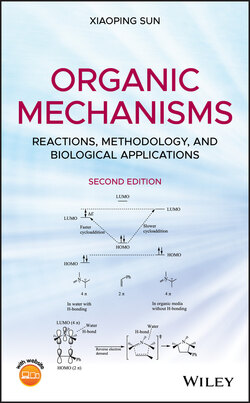Читать книгу Organic Mechanisms - Xiaoping Sun - Страница 18
Unimolecular reactions
ОглавлениеA unimolecular reaction (Eq. 1.1: A ➔ P) follows the first‐order rate law as shown in Equation 1.9
(1.9)
where k is the rate constant (with the typical unit of s−1) for the reaction, and it is independent of the concentration of the reactant. The rate constant is the quantitative measure of how fast the reaction proceeds at a certain temperature.
Rearranging Equation 1.9 leads to
(1.10)
Integrating Equation 1.10 on both sides and applying the boundary condition t = 0, [A] = [A]0 (initial concentration), we have
(1.11)
From Equation 1.11, we have ln[A] – ln[A]0 = −kt
Therefore,
(1.12)
Equation 1.12 is the integrated rate law for a unimolecular reaction.
The half‐life (t1/2) of reactant A (the time required for conversion of one‐half of the reactant to the product, i.e., when t = t1/2, [A] = ½ [A]0) can be solved from Equation 1.12 as follows:
Therefore,
(1.13)
Equation 1.13 shows that the half‐life of a substance that undergoes first‐order decay is inversely proportional to the rate constant and independent of the initial concentration.
